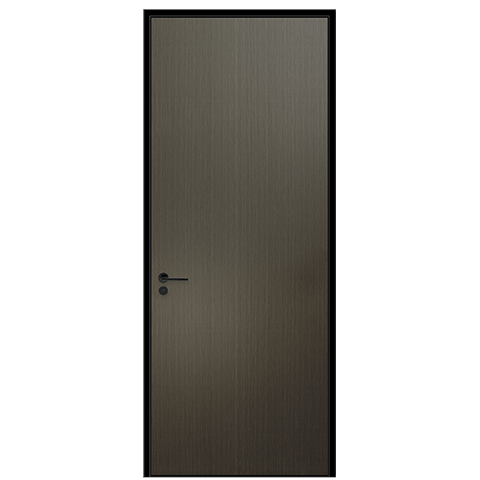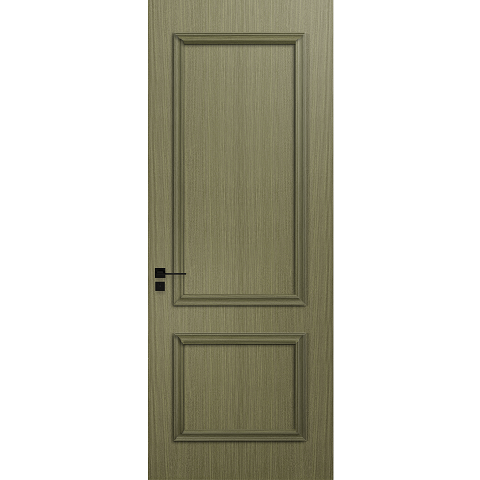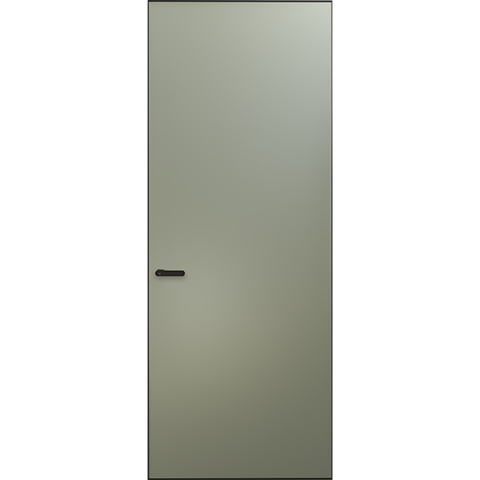5 common forms and structures of invisible doors
In interior spaces, invisible doors are a very stylish design expression. It has no handles, no door frames, and no keyholes, often creating the illusion that "it's not a door".
Creating private space, realizing space separation, and highlighting decorative performance are the three most basic functions of invisible doors. At the same time, because of the high requirements on the craftsmanship, it is also a big test for the designers and construction personnel.
This article will interpret the following three points, hoping to bring you some help:
1. Under what circumstances do you need to design an invisible door?
2. Types of invisible doors
3. Process structure of invisible door
01. Under what circumstances should an invisible door be designed?
1. Divide public and private space
If your client doesn't want outsiders to enter his private areas (eg: the lounge in the study, the cloakroom in the bedroom, etc.), then the invisible door will definitely win his favor.
2. The bathroom is facing the entrance door or bedroom
This kind of situation is generally caused by the defect of the apartment, and it is used when the taboo of Feng Shui needs to be broken. Or simply feel that some positions are not good-looking, you can use invisible doors to cover the "defects".
3. In order to ensure the integrity of the wall
If you want to model on an entire wall, the invisible door without frame and handle can achieve the effect of not destroying the beauty.
4. The secret room
Usually a room for storing valuables, or... the boss's office.
02. Types of invisible doors
1. Swing invisible door
The swing type is the most common form of invisible door opening, and it is also the most commonly used. It generally installs the hinge on the front of the door and opens it inward or outward. It is suitable for various functional spaces such as bedrooms, study rooms and storage rooms.
Cleverly designed, invisible doors can really confuse people's eyes. Designers generally integrate invisible doors and background walls to create an integrated visual effect.
2. Push-pull invisible door
The lightweight sliding invisible door design can not only divide the room space, but also retain the openness of the space as much as possible, so it is usually used in the design of small apartments.
The appearance value of the sliding invisible door is higher than that of the casement type, the integration with the space environment is also more clever, and the shape can also show the artistic sense.
3. Revolving invisible door
The revolving door needs to take up more space than the first two, and is generally used in larger spaces such as villas and mansions. It takes into account the triple needs of doors, partitions and shapes. It's also better in terms of visuals and fun.
4. Invisible doors with borrowed furniture
Many invisible doors appear behind a large row of storage racks. First, they are used for storage, and second, the patterns on the storage racks can just provide a good camouflage for the invisible doors. Door industry vision, your friend!
5. Invisible doors hidden in the ground
This classification is not very practical, and only some families have this situation. It is impossible to create a new space underground for a commercial building such as an apartment.
03. Process structure of invisible door
In fact, we have already deeply analyzed the construction of invisible doors (secret doors) in previous articles. But in order to facilitate the reading of the little friends, the following small series once again offer the craftsmanship.
As shown in the figure above (taking the dry hanging of stone as an example), the door leaf part is actually an extension of the surrounding wall method. The structure of the surrounding material is used to make the door leaf.
There are two main forms of opening and closing components:
1. Realize opening and closing settings through hinges
By assembling the dark hinge + wood base layer to make the door achieve the invisible effect. The advantages are: low installation cost, easy construction, safety and stability, and large opening angle. The disadvantage is that the door leaf carried is light in weight.
This is the most widely used trapdoor treatment in interiors, bar none. Suitable for wood veneer invisible doors, latex paint invisible doors, metal veneer invisible doors, etc.
2. The opening and closing setting is realized through the heaven and earth axis + steel frame base
This is to open the door leaf by using the heaven and earth shaft to be welded. Advantages: large load bearing, low material cost and stable performance. Disadvantages: The installation is more troublesome, the opening angle is small, and it is inconvenient to open.
This method is mainly aimed at the measures taken when the heavy-duty finishing material is invisible door, that is to say, the use of the heaven and earth axis is only considered when the hinge cannot be used.
 Hot Recommendation
Hot Recommendation
 Latest Products
Latest Products



